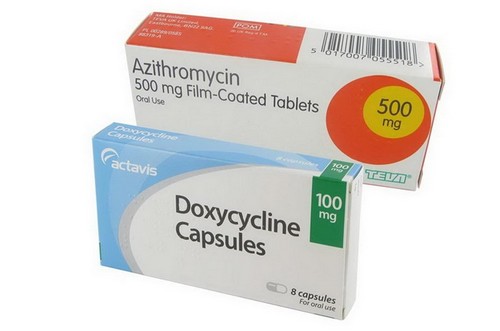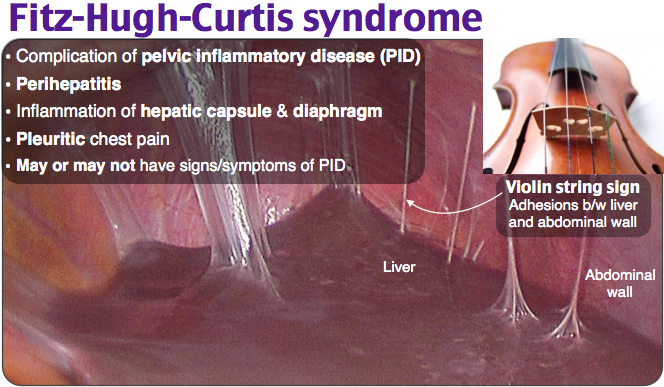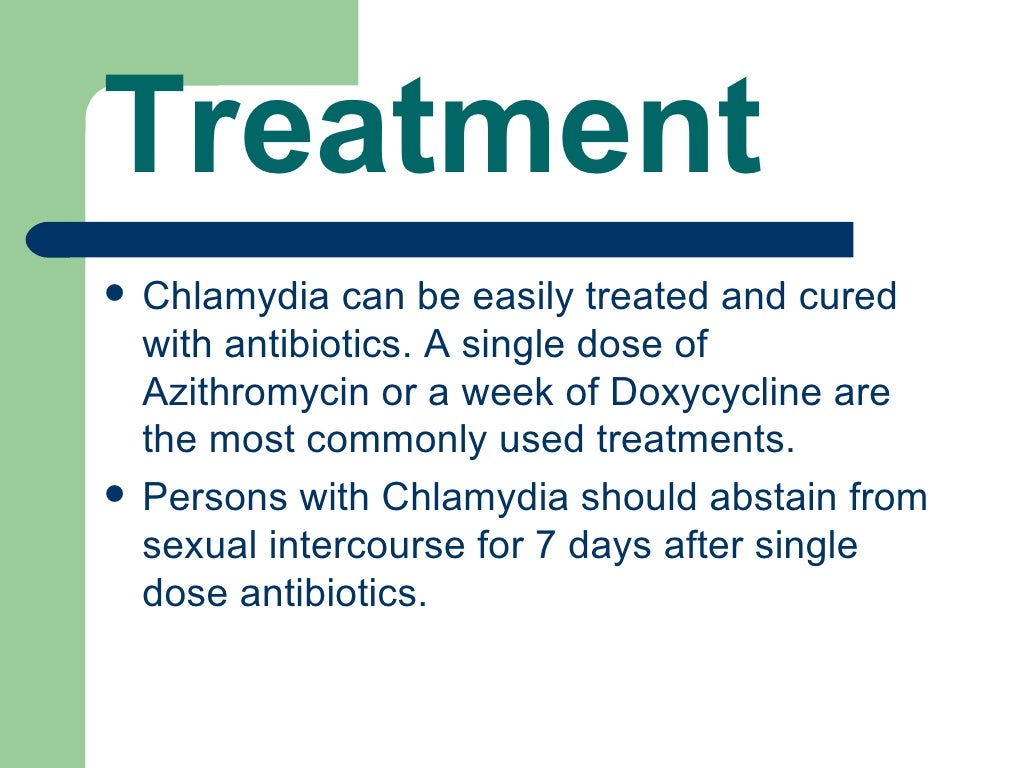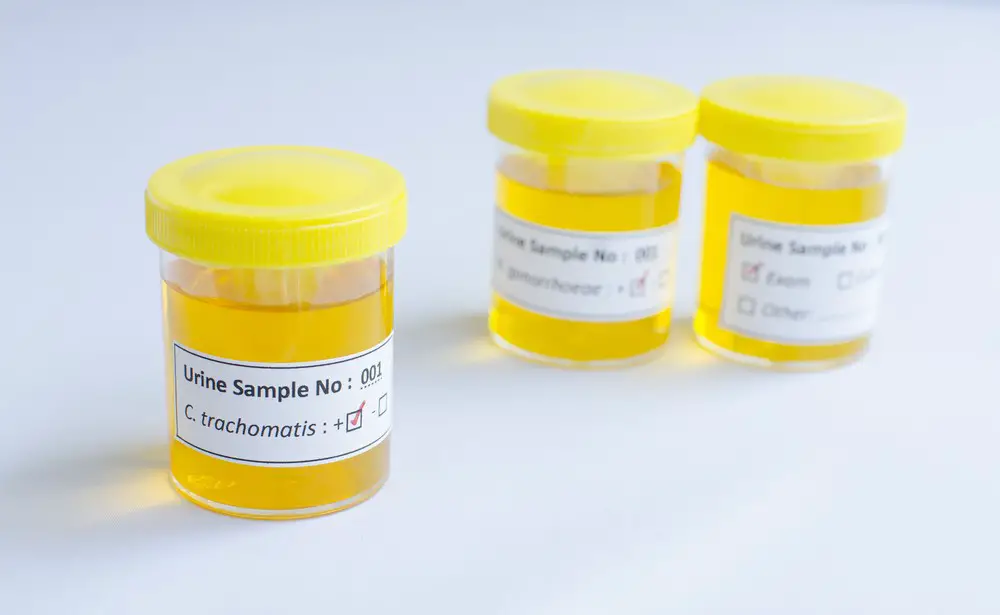

You can get reinfected with chlamydia if you have sex within the 7 days.Īfter you have completed treatment, have another test for chlamydia in 3 months’ time to make sure you have not been re-infected. This includes all kinds of sex (vaginal, anal and oral) with or without a condom. If complications from chlamydia infection are present – such as pelvic inflammatory disease (PID) in women – a longer course of antibiotics will be required.ĭo not have sex for 7 days after you and your current partner have completed treatment. If detected early, chlamydia can be treated with a single dose of antibiotic.

Test results are normally available within a week. The specimen is then sent to a laboratory for testing.

swab from the vagina, cervix, anus or penis.Tests are painless and usually involve either: How is chlamydia diagnosed?Ĭhlamydia is an easily diagnosed and curable STI. It can also be spread from a long-term partner who has had sex with other people. Remember, you can get chlamydia and other STIs from a new sexual partner who has in the past had sex with someone who is infected. Remember, you are at greater risk if you have sex without a condom with 1 or multiple sexual partners.Ĭhlamydia is spread when a person has unprotected sex (sex without a male or female condom or dental dam) with an infected person.īecause chlamydial infection often has no symptoms, many people do not realise they have the infection.Įven if you know a person well, you may not be able to tell they have an STI, because people can look healthy and still have chlamydia.Get checked more often during the year if you frequently change sexual partners.An annual sexual health check-up (which includes chlamydia testing) is highly recommended if you are sexually active – especially if you are under 25.Frequency of testing also depends on your STI risk: Sexual health check-ups are recommended for anyone who is sexually active. How often should I get checked for chlamydia? In men (if symptoms are present), may include: In men, chlamydia infects the urethra and may spread to the epididymis – the tube that carries sperm from the testicles. Men who have chlamydia usually do not have any signs or symptoms. What are the symptoms of chlamydia in men? In women (if symptoms are present), may include: If a pregnant woman has chlamydia, it can pass on to her baby during childbirth – causing lung or eye infections. It can infect the cervix and spread to the uterus and fallopian tubes, causing: Most women with chlamydia, have no signs or symptoms. What are the symptoms of chlamydia in women?

Have any type of unprotected sex (without condoms) with someone who is infected with chlamydia.Often have different or multiple sexual partners.You are at increased risk of infection if you: Who is at risk of chlamydia?Īnyone who is sexually active is at risk of chlamydia. It can affect women and men of all ages, but most frequently occurs in young people (under 25) who regularly change sexual partners.Ĭhlamydia is spread by having unprotected sex of any kind with an infected person. It is often called the ‘silent infection’ because most people do not realise they have it. Chlamydia is caused by the bacterium Chlamydia trachomatis and is a very common sexually transmissible infection (STI).


 0 kommentar(er)
0 kommentar(er)
